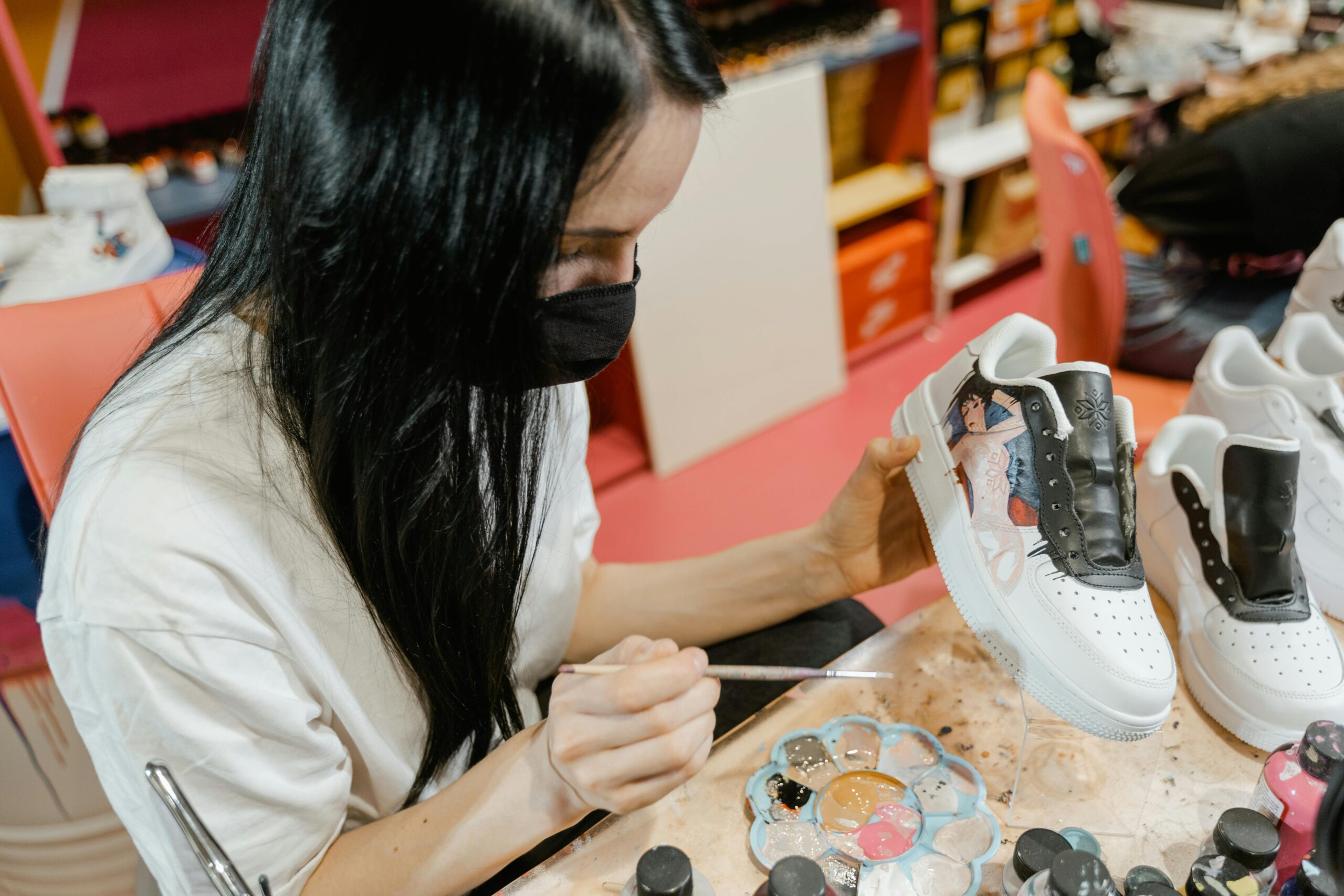Shoe patterns are the blueprint for creating footwear that fits well and looks stylish. Whether you’re a seasoned shoe designer or a novice enthusiast, understanding how to create and manipulate shoe patterns is essential in the world of footwear design. In this article, we will delve into the intricacies of shoe patterns, exploring their importance, types, and the skills required to excel in this aspect of shoe design.
Importance of Shoe Patterns
Shoe patterns serve as the foundation for crafting shoes that not only look good but also provide comfort and functionality. A well-designed shoe pattern ensures that the shoe fits the foot perfectly, providing support and stability. Without a proper pattern, even the most beautiful shoe design may fall short in terms of wearability and comfort. Therefore, mastering the art of creating accurate and well-fitted shoe patterns is crucial for any aspiring shoe designer.
Types of Shoe Patterns
There are various types of shoe patterns, each tailored to different styles and designs of footwear. Some common types of shoe patterns include:
- Basic Pattern: The basic pattern serves as the starting point for creating different shoe styles. It includes the essential elements of the shoe, such as the sole, upper, and heel, in a simple and straightforward design.
- Lasted Pattern: Lasted patterns are created by wrapping the shoe last (a form in the shape of a foot) with pattern paper and marking the design lines directly on the last. This method allows for a more precise and customized fit.
- Moccasin Pattern: Moccasin patterns are commonly used for slip-on shoes and feature a simple construction with minimal seams. They are known for their comfort and flexibility.
- Oxford Pattern: Oxford patterns are typically used for lace-up dress shoes and feature a closed lacing system. They often have a sleek and sophisticated design suitable for formal occasions.
- Boot Pattern: Boot patterns are designed for taller footwear that covers the ankle or higher. They come in various styles, such as ankle boots, knee-high boots, and cowboy boots, each requiring unique pattern adjustments.
Skills Required for Shoe Pattern Design
Creating shoe patterns requires a combination of technical skills, creativity, and attention to detail. Some essential skills for shoe pattern design include:
- Understanding of Foot Anatomy: A deep understanding of foot anatomy is crucial for creating shoe patterns that fit comfortably and support the foot correctly.
- Pattern Making: Proficiency in pattern making techniques, such as drafting, cutting, and sewing, is essential for translating design ideas into tangible patterns.
- Knowledge of Materials: Understanding different shoe materials and their properties is important for selecting the appropriate materials for each part of the shoe pattern.
- CAD Skills: Proficiency in computer-aided design (CAD) software can streamline the pattern design process and allow for more precise adjustments and customization.
- Attention to Detail: Precision and attention to detail are vital when creating shoe patterns to ensure that each component fits together seamlessly and accurately.
Creating Custom Shoe Patterns
Designing custom shoe patterns allows for greater creativity and personalization in footwear design. By creating custom patterns, designers can tailor the fit, style, and details of the shoe to meet specific preferences or requirements. Whether designing for a particular foot shape, style preference, or functional need, custom shoe patterns offer endless possibilities for innovation and uniqueness in shoe design.
Pattern Adjustments and Iterations
Creating the perfect shoe pattern often requires multiple adjustments and iterations to achieve the desired fit and design. Designers may need to make modifications to the pattern based on feedback from prototypes, fit tests, or customer preferences. By continuously refining and improving the pattern, designers can ensure that the final shoe meets both aesthetic and functional requirements.
Pattern Grading and Scaling
Pattern grading is the process of scaling a base pattern up or down to create different sizes of the same shoe design. This is essential for ensuring that the shoe fits a range of foot sizes while maintaining the proportions and design details of the original pattern. Pattern grading requires precision and accuracy to achieve consistent sizing across the footwear collection.
Pattern Digitization
In today’s digital age, many shoe designers use computer-aided design (CAD) software to digitize their patterns. Digitizing patterns allows for easier storage, organization, and modification of patterns, as well as the ability to create virtual prototypes and simulations. CAD software can streamline the pattern design process and facilitate collaboration between designers and manufacturers.
Pattern Collaboration and Communication
Effective collaboration and communication between designers, pattern makers, and manufacturers are essential for bringing shoe patterns to life. Clear communication of design intent, technical specifications, and pattern adjustments ensures that the final shoe aligns with the designer’s vision and meets quality standards. Collaborating with skilled pattern makers and craftsmen can enhance the quality and craftsmanship of the final shoe product.
Pattern Testing and Feedback
Testing shoe patterns through prototypes and samples is a crucial step in the design process. Conducting fit tests, wear tests, and comfort assessments helps identify any issues or improvements needed in the pattern design. Collecting feedback from wearers, testers, and industry professionals can provide valuable insights for refining the pattern and optimizing the shoe’s performance and comfort.
Pattern Innovation and Trends
The world of shoe patterns is constantly evolving, with designers exploring new techniques, materials, and styles to push the boundaries of footwear design. Innovative pattern cutting methods, sustainable materials, and digital pattern technologies are shaping the future of shoe design. Keeping abreast of emerging trends and technologies in pattern design can inspire new creativity and elevate the quality of footwear collections.
Conclusion
Learning shoe pattern design requires a blend of technical expertise, creative vision, and attention to detail. By honing your pattern making skills, experimenting with different styles and materials, and staying updated to industry trends, you can create footwear patterns that not only look great but also fit perfectly and provide exceptional comfort.
Key Takeaways:
- Shoe patterns are critical for ensuring proper fit, comfort, and style in footwear design.
- Types of shoe patterns include basic, lasted, moccasin, oxford, and boot patterns, each serving different shoe styles.
- Core skills required: knowledge of foot anatomy, pattern making techniques, and attention to detail.
- Pattern adjustments and grading are essential for achieving the right fit and creating multiple shoe sizes.
- CAD technology simplifies pattern design, storage, and modifications.
- Prototyping and testing ensure shoes are comfortable and meet design goals.
- Innovation and trends like sustainable materials and digital techniques are shaping the future of shoe patterns.
The art of designing and creating shoe patterns is integral to the production of luxury footwear. Understanding the importance of shoe patterns, the different types, the skills needed, and the steps to creating a custom shoe pattern can elevate your design process. Enhance your knowledge and expertise further by considering the FIT Footwear Business Foundations online course and certificate program.








